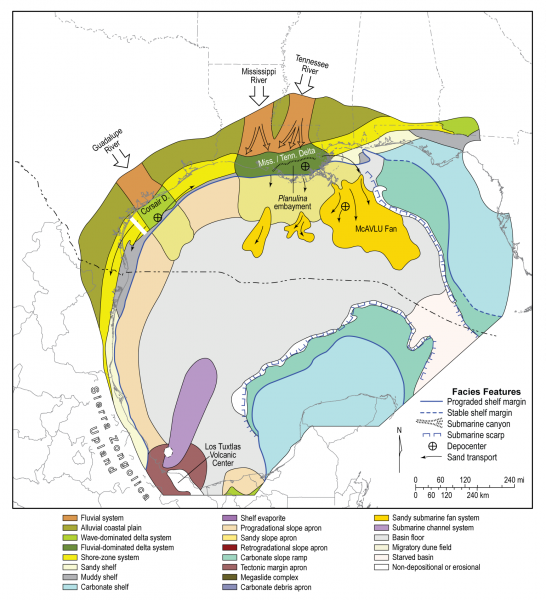GBDS Expands to Entire Gulf
November 12, 2020

For 25 years, an industry-sponsored research project led by the University of Texas Institute for Geophysics (UTIG) has provided its members with a depositional history of the offshore northern Gulf of Mexico. Starting in January 2020, UTIG’s Gulf Basin Depositional Synthesis (GBDS) program expanded its scope, offering members an analysis of the entire basin, including the southern Gulf and onshore regions.
“We’ve adapted as a research project by greatly expanding our portfolio,” said program director John Snedden. “We are now in a position to satisfy a diverse set of interests, while maintaining leveraged advantage for our 26 members.” The program’s primary scientific product is the GBDS Phase XII Atlas, which includes hundreds of cross sections and maps detailing the basin’s depositional history. The atlas is updated each year and a new edition presented to industry members at the annual meeting.
Historically, oil and gas exploration in the northern Gulf of Mexico has surged as new techniques and better geological and geophysical understanding have helped unlock new energy reserves. The southern Gulf of Mexico, which was closed to international exploration for decades, has been, so far, much less prolific. Much of this comes down to a lack of knowledge about the region’s subsurface.
Until recently, the only available regional data came from seismic studies conducted by UTIG in 1976. When the Mexican government decided in 2015 to allow foreign companies to explore its waters, GBDS’s knowledge of the southern Gulf of Mexico was a unique resource for the industry.
Now, the program is leveraging this knowledge to offer expert analyses of data emerging from the southern basin. By expanding into new waters and offering companies detailed onshore data, the program has reinvented itself and broadened its appeal in a way that reflects increasing diversification in the industry.
Back to the Newsletter